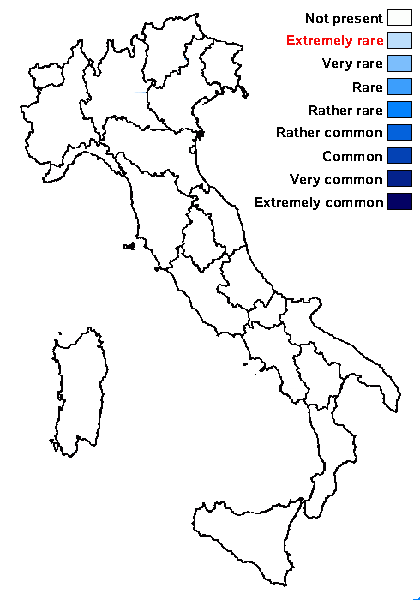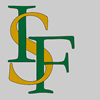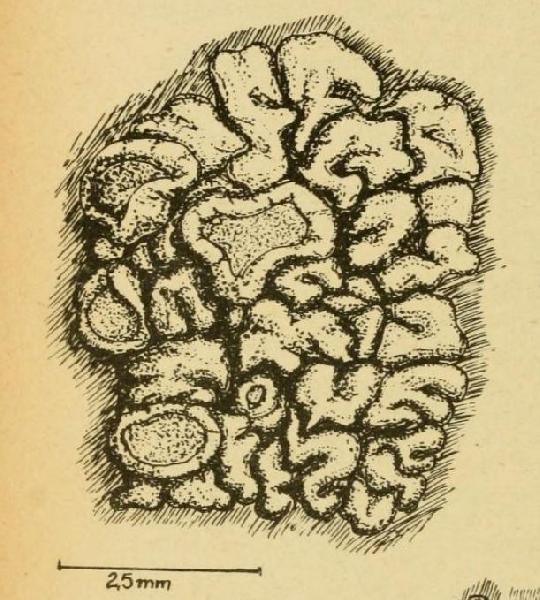Lecanora cerebellina Poelt
Mitt. bot. Staats. München, 19-20: 471, 1958.
Synonyms:
Distribution:
Description: Thallus crustose-placodioid, episubstratic, convex-pulvinate, greenish white to ochraceous, more or less white-pruinose, with 1-1.5 mm long, contiguous, often subcerebriform, convex to apically flattened lobes, forming 3-10 mm wide rosettes. Cortex 40-50 μm thick, inspersed with crystals; medulla white, lax. Apothecia lecanorine, numerous, round to irregular in outline, slightly constricted at base, with a concave to flat, greenish white to brownish grey disc, and a thick, prominent thalline margin. Thalline exciple of strongly conglutinated hyphae; epithecium brownish, granulose, 5-10 μm high; hymenium colourless, 50-65 μm high; hypothecium colourless, inspersed with granules. Asci 8-spored, clavate, very thin-walled, with a K/I+ blue, tall tholus penetrated by a faintly amyloid apical cushion, the wall K/I-, surrounded by a blue outer layer, Lecanora-type. Ascospores 1-celled, hyaline, ellipsoid, 9-11 x 5-6 μm. Pycnidia dark, immersed. Conidia thread-like, c. 15 x 0.6 μm. Photobiont chlorococcoid. Spot tests: K+ ochraceous yellow, C+ orange, KC+ orange, P+ bright yellow. Chemistry: 0-Methylmonochlornorlichexanthone (major), 0-methyldichlornorlichexanthone (minor), traces of norstictic acid.
Note: on steeply inclined surfaces of calcareous rocks protected from rain. Known from the southern parts of the Balkan Peninsula; to be looked for in the Apennines. The species might belong in Polyozosia.
Growth form: Crustose placodiomorph
Substrata: rocks
Photobiont: green algae other than Trentepohlia
Reproductive strategy: mainly sexual
In underhangs rarely wetted by rain

Predictive model
Growth form: Crustose placodiomorph
Substrata: rocks
Photobiont: green algae other than Trentepohlia
Reproductive strategy: mainly sexual
In underhangs rarely wetted by rain

Predictive model
 INDEX FUNGORUM
INDEX FUNGORUM
 GBIF
GBIF


